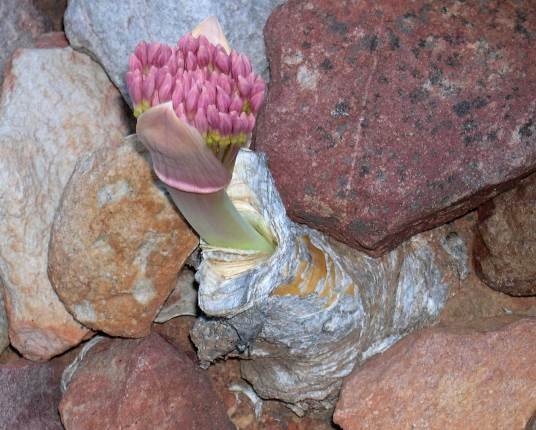Boophone disticha resolute under rocks

Author: Ivan Lätti
Photographer: Louis Jordaan
Undaunted by its rocky station in life, this sprouting Boophone disticha is tackling the new season with the same vigour as every other year and as its counterparts living in the lap of luxury.
The plant’s toughness blurred with pugnacity reminds of the origin of its generic name: Boophone is derived from the Greek words bous meaning ox and phonos meaning the “ghastly faced personification of death”, a notion entertained by the ancient Greeks. This refers to the bulb’s toxicity that sometimes causes death among cattle and sheep.
The flattened young peduncle emerges with its developing flowery tip from the middle of numerous layers of papery tunics at the top of the bulb. Initially it had a covering at the top consisting of two broad spathe bracts, in picture opened and flanking the buds.
These bracts were important until recently when shielding the buds, preventing damage during their short upwards journey for their grand entrance. Then they get pushed aside, the buds meeting daylight themselves unencumbered and take centre stage.
The bracts don’t disappear though. They change colour while hanging in throughout the flowering season, steadily pushed down by the pedicels that usurp space.
Like the bracts, the tepals, stamens and other parts serve their purpose and disappear after brief importance or dominance. Every year all the above-ground components are replaced by new ones, the bulb being the plants only perennial part (Duncan, et al, 2016; Vlok and Schutte-Vlok, 2015; Pooley, 1998).

